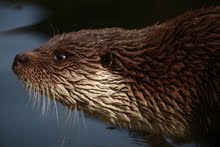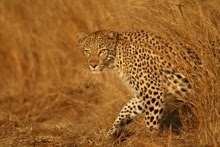Whilst in Thailand, we stayed on the edge of Khao Sok National Park (an absolute gem) where we had a banana flower visited by a number of different spiderhunter species. I had been meaning to make a video on shutter speed and digiscoping for a while, and this seemed like a perfect opportunity.

Now in normal daylight conditions, pretty much anyone can take a half decent (sharp) photo with a digital camera. Just keep it on that little green square (full automatic mode), and away you go. As easy as that.
Digiscoping is something completely different. Focal lengths in digiscoping typically range from long (say 800mm) to the ludicrous (5000+ mm) and this brings with it a whole pile of issues. Professional telephoto photographers deal with these issues all the time and digiscoping is no different. It requires the digiscoper to commit time and energy to start to think more like a serious photographer. To understand what shutter speed, aperture, ISO and all those other fantastic things are all about.
So, what shutter speed do I need to get a good, sharp digiscoping photo?
This is, unfortunately, not a simple question to answer and depends on many factors including:
- type of camera (DSLR with a flapping mirror, or little compact camera?),
- how steady your setup and hand are (just had a Red Bull and espresso?)
- how much your subject is moving (tortoise or hare?), and
- luck (had to add that ;-)
- how steady your setup and hand are (just had a Red Bull and espresso?)
- how much your subject is moving (tortoise or hare?), and
- luck (had to add that ;-)
DSLRs have a flapping mirror = need more shutter speed
As the name suggests, DSLRs have a mirror that flaps about all over the place. If you want to take a sharp photo with a flappy DSLR and a focal length of 1000mm, then you will need a shutter speed of a good 1/1000s. Which, unless it is a bright day, will mean that you will have to have a high ISO.
Here is a video on ISO in digiscoping:
DSLR on LiveView cuts out mirror flap.
A trick to use with modern DSLRs is that you can switch to LiveView and take a photo there without the mirror flapping, i.e. the only extra movement comes from the aperture blinking while taking the photo. At the moment, it only seems to be the Canon cameras that do this, which is one of the many reasons why I much prefer Canon DSLRs to the Nikons I have used recently (for digiscoping, that is. For general photography and telephoto photography, I find the Nikons just as nice).
Compact cameras shake less.
The much smaller blinking eye in compact cameras seems to produce much less vibration when taking a photo with a DSLR even on LiveView. This is why you can push the shutter speed even slower with a little compact and still have a chance of getting a half-way sharp photo.
More stability = need less shutter speed.
By making sure that there is as little shake in the entire system as possible, you effectively reduce the minimum shutter speed you need in order to get a sharp photo. This includes using things like a cable release, a countdown timer, a good tripod or bean bag, and avoiding wind:
A good dose of luck never hurt anyone.
Or, as Gary Player used to say, "the more I practice, the luckier I get". Practice, practice, practice. And take lots of photos, some will be keepers!
Happy digiscoping,
Dale Forbes










.jpg)








.jpg)



4 comments:
excellent videos! well done.
Dale, you asked me to post my experience here, so following are some of my observations after using the 80hd in conjuction with the tls800 and the 7D:
Preferred shutterspeed: 1/1000th or higher (handheld and on tripod)
Minimum shutterspeed: 1/800th handheld on tripod)
Metering Mode: Partial Metering when the object fills a larger part of the sensor / lock exposure / re compose
Evaluative Metering if the object fills the sensor
Rather than using AV i use TV allowing me to lock the shutterspeed at the preferred setting and since the aperture is fixed anyway i can change the exposure in extreme conditions by adjusting the shutterspeed with my index finger (or via the ISO as a secondary choice only if >3200 is required to expose correctly).
If light conditions are really bad, eg if i am in a dense forest or out late in the afternoon, i go to manual (or C3) with the ISO set to 6400 (or sometimes even 12800 which still produces ok images albeit you need to bin them to a small size).
The custom modes i have pre-programmed as following in order to switch quickly: C1 = TV / 1/1000th, Auto ISO, C2 = TV / 1/400th , Auto ISO and selftimer 10sec for use with remote release RC1, C3 = TV / 1/1000th , ISO 6400
anyway this is just my receipe and since i am very new to DSLRs etc i would be glad to get some more tips and tricks.
Kind regards,
Hannes
Hi Hannes,
Thanks for posting your experiences and insight.
As with golf, there are no hard and fast rules in digiscoping. It takes time and practice; getting to knwo your own equipment and finding out what works best for you.
The things I suggest are normally all based around getting people to understand what they are doing and why; and if you rely on that little green box (automatic mode) then your likely to end up with disappointing results.
Happy digiscoping,
Dale
green box equals danger and disappointment !!!
you are certainly doing the right thing Dale by trying to get people to understand why and what they are doing.
And i think thats certainly something most people appreciate.
kind regards and happy digiscoping,
Hannes
Post a Comment